#a. merritt's fantasy magazine
Text

"The arm of the goddes was long and strong and sure." - George Challis
Virgil Finlay - The Smoking Land
(A. Merritt's Fantasy Magazine - Ferbuary 1950)
#virgil finlay#the smoking land#george challis#a. merritt's fantasy magazine#pulp art#fantasy art#sci fi art#goddes#beauty#illustration
277 notes
·
View notes
Text
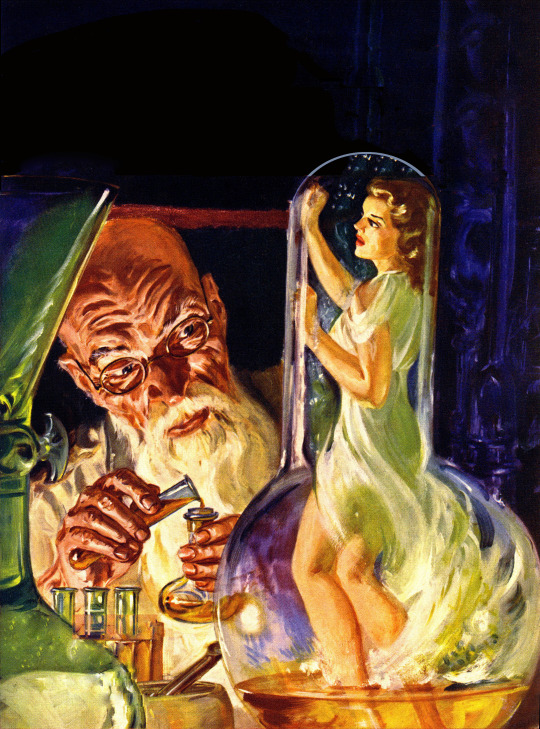
A Merritt's Fantasy Magazine Oct 1950
Norman Saunders
#golden age art#pulp magazine art#pulp art#pulp art 1950#A Merritt's Fantasy Magazine#Norman Saunders art#byronrimbaud
4 notes
·
View notes
Note
Where can I read pulp novels like The Shadow and Doc Savage?
Archive.org is so much, much more than just the Wayback Machine. For posterity, they have completely digitized a tremendous amount of scifi and horror and adventure pulps, all available for reading and downloading in PDF, including the following:
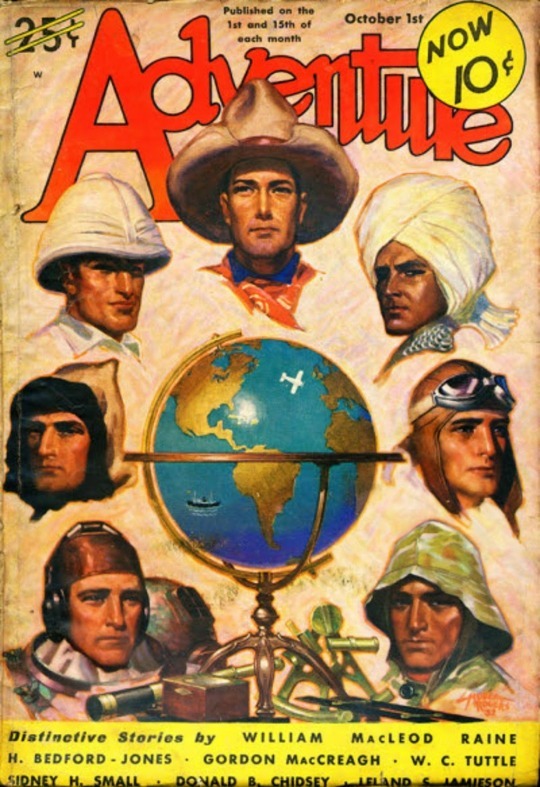
Adventure. Of the big two pulps, they have the entire golden age of possibly the greatest pulp mag of all time, Adventure, from 1914-1930, when they had Talbot Mundy's mystic adventures in Central Asia and India, and Harold Lamb's tales of the Mongols and Cossacks. It's incredible to just flip through them and find things like articles where people talk about what it's like to be bitten by a snake, or a firsthand account of the Italian invasion of Abyssinia, or polar exploration from the air. The stories are just the beginning, and in reprints, they don't include the fact they have wonderful maps of where the story is set.
Argosy is also available, the very first pulp magazine ever made starting in 1896. So you can read, among others, the first stories of Zorro, Tarzan, and fantasy novelist A. Merritt, as well as find letters pages where you see the weird prose H.P. Lovecraft, who the other letters that wrote in response did nothing but make fun of him. It's like witnessing cyberbulling in 1914 mixed with crank youtube comments.

Weird Tales. Speaking of Lovecraft, they also have almost the entirety of Weird Tales. Unlike Adventure and Argosy, which sold in the millions, this one was a low seller, but through Robert E. Howard (creator of Conan) and the incredible worlds of Clark Ashton Smith (the true genius of Weird Tales), and the space adventures of C.L. Moore.
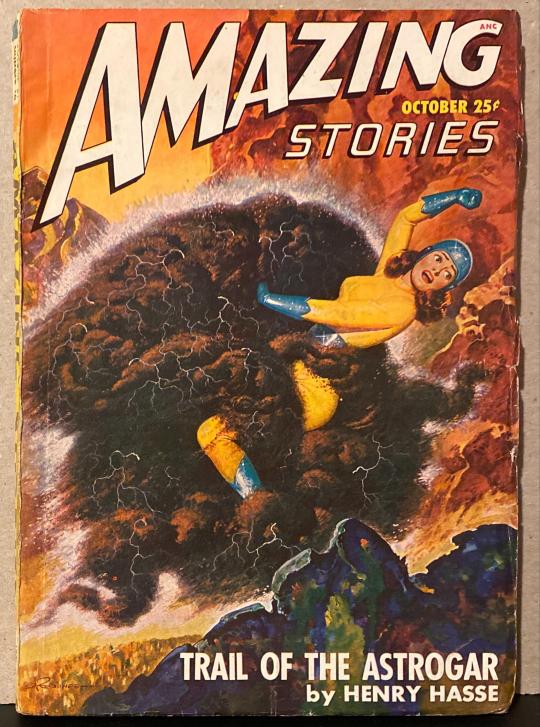
The first ever scifi pulp magazine, Amazing Stories, is available for reading. It created geek culture as we know it as he encouraged fans to message each other. So geek culture as we know it started in 1928 so a Luxembourg American weirdo could sell radio parts.
Don't sleep on a few of the minor ones. My favorite is Unknown, which has amazing work by L. Ron Hubbard, one of the best early fantasy and horror novelists. There's also A. Merritt's Fantasy, a reminder of a time he was THE name in Fantasy.

Unfortunately the hero pulps were mostly published by Street and Smith and are therefore not in Public Domain, but for those, there are great, cheap collections available that I recommend, especially as they have great historical material added by William Murray, pulp historian.
271 notes
·
View notes
Text
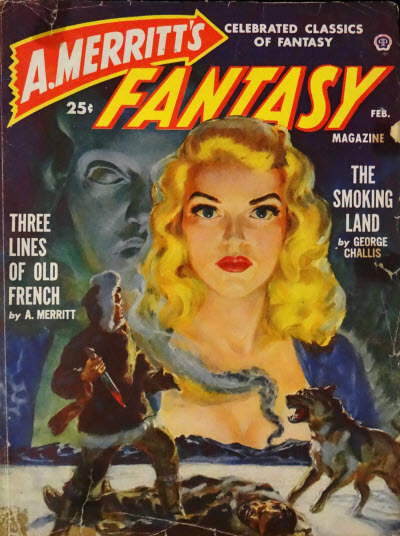
A. Merritt's Fantasy Magazine Feb 1950
11 notes
·
View notes
Photo

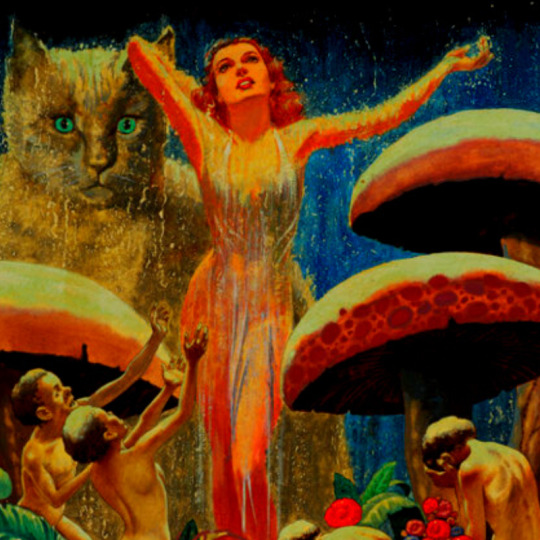
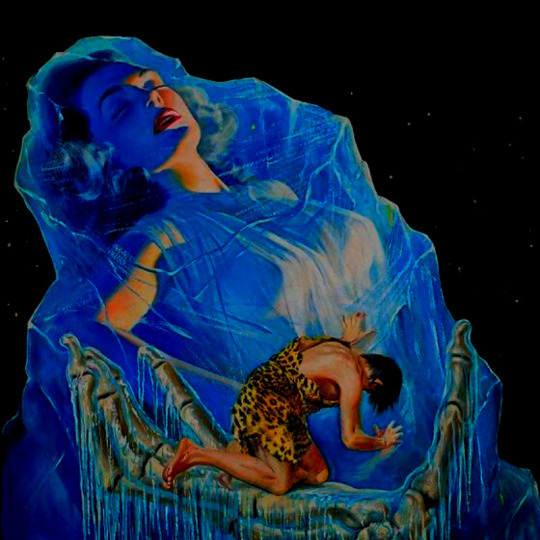

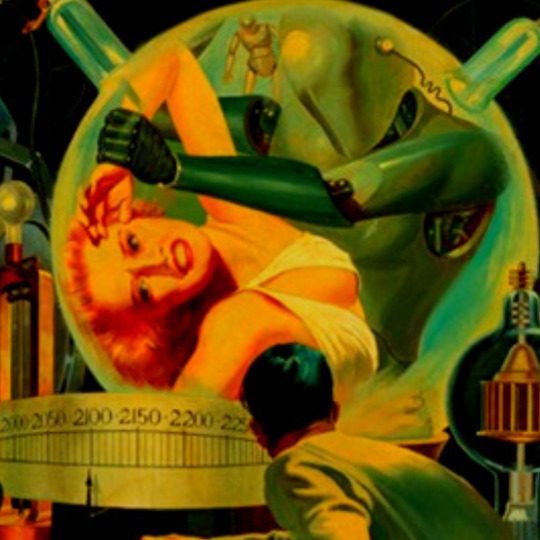




lawrence sterne stevens (1884-1960) was an american pulp fantasy and science fiction illustrator. he is known for his interior story illustrations for argosy and cover paintings for adventure, amazing, a. merritt's fantasy magazine, famous fantastic mysteries, and fantastic novels
#lawrence sterne stevens#art history#history#vintage#pulp fantasy#science fiction#vintage art#historyedit#aesthetic
240 notes
·
View notes
Text
WHAT DEFINES A CLASSIC?
READING THE AVON FANTASY READER — ISSUE 1
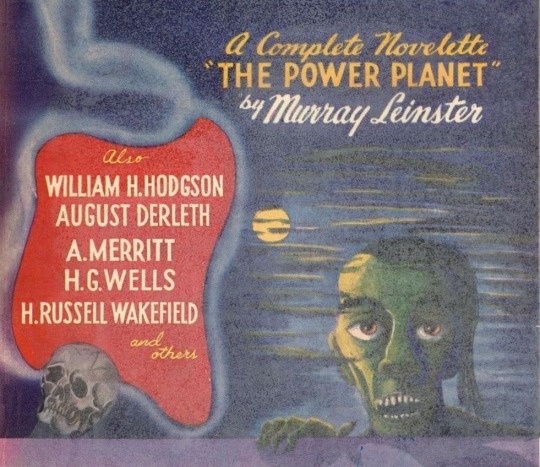
by Erik Mona
Over its 18 volumes, the Avon Fantasy Reader put forth works by authors like Robert E. Howard, Clark Ashton Smith, A. Merritt, and other foundational writers of early 20th century fantasy fiction. While the magazine did feature contemporary tales in several of its issues, the bulk of its content focused on already “classic” (or at least well-loved by Wollheim) tales from the previous four decades of fantasy (and sometimes even earlier).
Their resurrection here along with the archival work being done in Mary Gnaedinger’s Famous Fantastic Mysteries (1939–1953), Fantastic Novels (1940–1951), and A. Merritt’s Fantasy Magazine (1949–1950) and by other pulp editors in “classic story” features of various magazines of the time, started to establish a sort of “fantasy canon” that held steady for decades, in many cases to the present day.
I first became familiar with the Avon Fantasy Reader while hunting down rare stories for Paizo Publishing’s Planet Stories classic fantasy imprint, which I edited and published a little over a decade ago. That line focused heavily (but not heavily enough, alas!) on the early decades of the 20th century, following in the footsteps of folks like Wollheim and Gnaedinger. Over 33 books, we published classic and lesser-known works by authors like Merritt, C. L. Moore, Henry Kuttner, Manly Wade Wellman, and others, many of whom appeared in the Avon Fantasy Reader. I’d deeply enjoyed my first foray into this material years ago, and the near-completion of the series at this year’s Windy City was all I needed to start where I always like to start — at the beginning.
READ MORE
This is a great piece on an important piece in the popularization of the Fantasy genre in fiction. Well worth the time. ~ eP
2 notes
·
View notes
Photo







Cover artworks of pulp magazine and book releases of A. Merritt’s The Dwellers in the Mirage. Part 1, view part 2.
Publication history
Read the novel
#cover#art#pulp fiction#magazine#books#a. merritt#the dwellers in the mirage#science fiction#fantasy
94 notes
·
View notes
Text

Vintage Pulp - A. Merritt's Fantasy (Feb1950)
Art by Norman Saunders
#Pulp#A Merritt's Fantasy#Fantasy#A Merritt#Norman Saunders#Pulp Art#Pulp Illustration#Fantasy Art#Fantasy Illustration#Vintage#Art#Illustration#Design#Magazines
32 notes
·
View notes
Photo
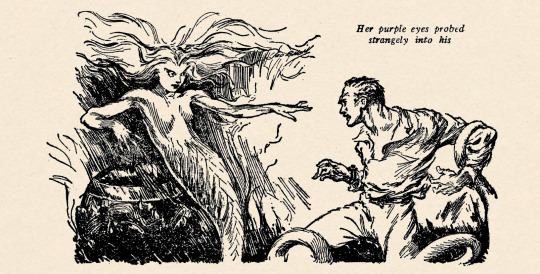
John Rea Neill (1877-1943), 'The Snake Mother', ''Argosy'', Vol. 216, #2, 1930
Source
#john rea neill#american artists#illustrators#illustrations#the snake mother#abraham grace merritt#a. merritt#argosy#argosy magazine#fantasy art
161 notes
·
View notes
Photo
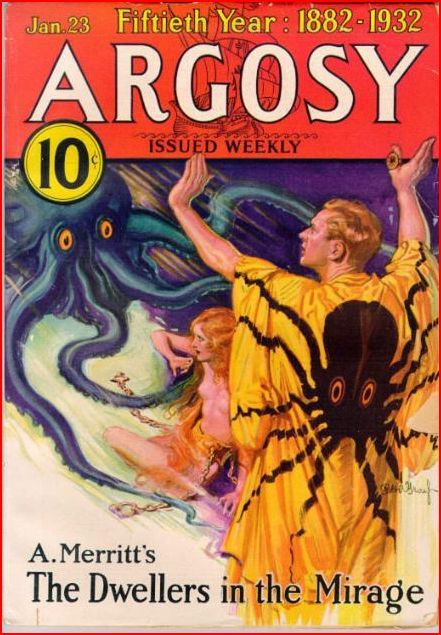
Argosy January 23, 1932 Cover art by Robert A. Graef
38 notes
·
View notes
Photo

Ship of Ishtar by Virgil Finlay (American artist, 1914-1971)
““The Ship of Ishtar”, one of Abraham Merritt’s finest fantasies, first appeared in the pages of Argosy magazine in 1924.
In this wonderful novel we meet John Kenton, an American archaeologist who has just come into possession of a miniature crystal ship recently excavated “from the sand shrouds of ages-dead Babylon.” Before too long, Kenton is whisked onto the actual ship, of which his relic is just a symbol. It turns out that the ship is sailing the seas of an otherdimensional limboland, and manned by the evil followers of the Babylonian god of the dead, Nergal, and by the priestesses of the Babylonian fertility goddess, Ishtar. A force barrier of sorts prevents the two parties from coming into contact with each other, and they have been sailing thus for … nobody knows how long. It seems that, centuries ago, a priest of Nergal and a priestess of Ishtar had been guilty of the sin of falling in love; this eternal cruise is the punishment that has been meted out by the gods. Kenton becomes embroiled in this ages-old strife; falls in love himself with Sharane, a Babylonian princess; eventually takes over the ship; and then goes in pursuit of the Black Priest of Nergal, after Sharane is kidnapped. He is aided in his quest by a sword-swinging Viking, a hugely strong and mace-wielding man of Nineveh, and by a scimitar expert from Persia. The quartet makes for one formidable team, lemme tell you!” ~ http://www.fantasyliterature.com/reviews/the-ship-of-ishtar/
60 notes
·
View notes
Text

"Beautiful she was thouhg terrible - this serpent woman with hair of spun silver...." - A. Merritt
Virgil Finlay - The Face in the Abyss
(A. Merritt's Fantasy Magazine - July 1950)
#virgil finlay#the face in the abyss#abraham merritt#a. merritt's fantasy magazine#pulp art#fantasy art#horror art#serpent woman#illustration
228 notes
·
View notes
Text

A Merritt's Fantasy Magazine Jul 1950
Norman Saunders
#golden age art#pulp magazine art#pulp art#pulp art 1950#A Merritt's Fantasy Magazine#Norman Saunders art#byronrimbaud
2 notes
·
View notes
Text


Originally published in 1932, Burn Witch, Burn is a prequel to Creep Shadow, Creep. Reprinted in Famous Fantastic Mysteries, the novel was accompanied by Virgil Finlay. It was filmed in 1936 by Tod Browning as the movie The Devil-Doll starring Lionel Barrymore.
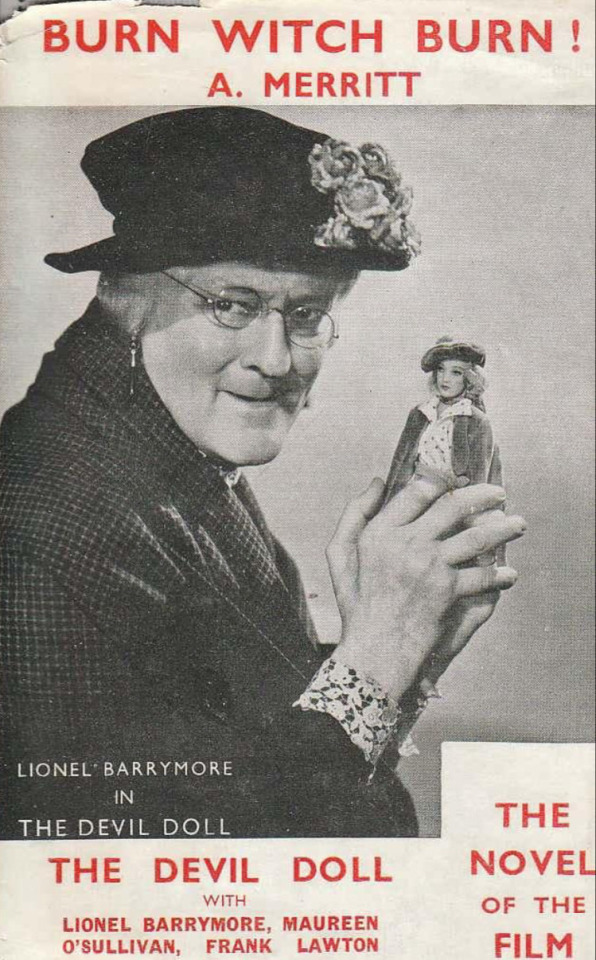


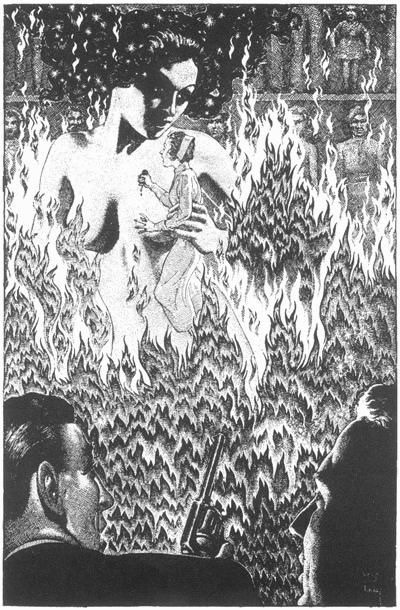


‘Abraham Grace Merritt, wrote under the name of A. Merritt, born in New Jersey moved as a child to Philadelphia, Pa. in 1894, began studying law and than switched to journalism. Later a very popular writer starting in 1919 of the teens, twenties and thirties, horror and fantasy genres. King of the purple prose, most famous The Moon Pool, a south seas lost island civilization, hidden underground and The Ship of Ishtar, an Arabian Nights type fable, and six other novels and short stories collections (he had written at first, just for fun). Nobody could do that variety better, sold millions of books in his career. The bright man, became editor of the most successful magazine during the Depression, The American Weekly , with a fabulous $100,000 in salary. A great traveler, in search of unusual items he collected. His private library of 5,000 volumes had many of the occult macabre kind. Yet this talented author is now largely been forgotten.’ — Goodreads

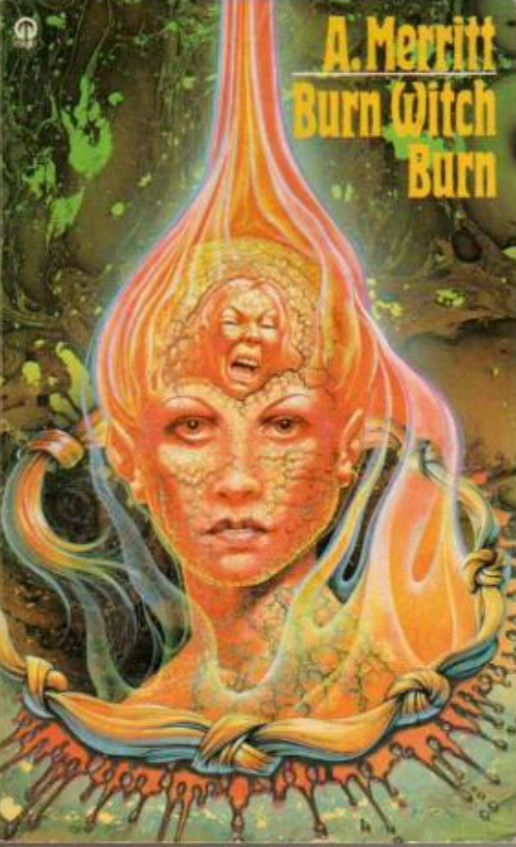
#book blog#books#book cover#books books books#horror#mystery thriller#pulp#pulp art#pulp fantasy#virgil finlay
2 notes
·
View notes
Text

A. Merritt's Fantasy Magazine December 1949
11 notes
·
View notes
Photo

A. Merritt's Fantasy Magazine v01n02 (1950-02) [Cover] via pulp
2 notes
·
View notes